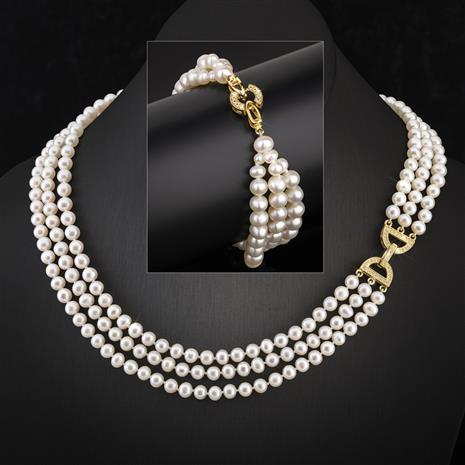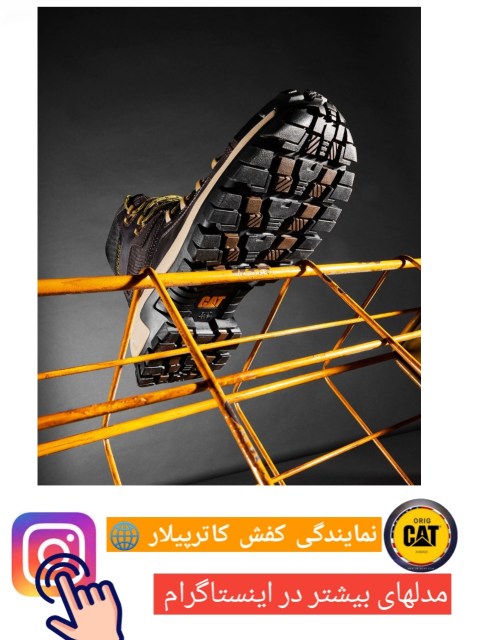


گردنبند مروارید: جواهری جاودانه و نماد زیبایی
مقدمه
گردنبند مروارید یکی از قدیمیترین و نمادینترین زیورآلات در تاریخ بشر است که همواره جایگاه ویژهای در فرهنگها و تمدنهای مختلف داشته است. این جواهر طبیعی که از دل دریاها و اقیانوسها استخراج میشود، به دلیل زیبایی، درخشندگی و نمادگرایی خاص خود، به یکی از محبوبترین انتخابها برای زیورآلات تبدیل شده است. در این مقاله به بررسی تاریخچه، انواع، ویژگیها و اهمیت گردنبند مروارید میپردازیم.
تاریخچه مروارید
مروارید از دیرباز به عنوان جواهری گرانبها و نایاب شناخته شده است. در تمدنهای باستانی همچون مصر، چین و ایران، مروارید جایگاه ویژهای داشته و نمادی از ثروت، قدرت و پاکی بوده است. در مصر باستان، مرواریدها به عنوان هدایایی برای فرعونها و اشراف استفاده میشدند. در ایران نیز، مروارید به عنوان بخشی از تاج و زیورآلات شاهانه مورد استفاده قرار میگرفت و نشانهای از عظمت امپراتوری هخامنشی بود.
روش تشکیل مروارید
مروارید به طور طبیعی در داخل صدفهایی که در آب شور یا آب شیرین زندگی میکنند، تشکیل میشود. زمانی که یک جسم خارجی مانند دانه شن وارد صدف میشود، صدف برای دفاع از خود لایههایی از کربنات کلسیم را به دور آن جسم میپیچد. این فرآیند ممکن است سالها طول بکشد و در نهایت، مرواریدی با درخشندگی طبیعی ایجاد میشود.
انواع مروارید
مرواریدها به دو دسته کلی تقسیم میشوند: مروارید طبیعی و مروارید پرورشی.
- مروارید طبیعی: این نوع مروارید به طور خودجوش و بدون دخالت انسان در صدف تشکیل میشود و به دلیل کمیاب بودن، بسیار گرانقیمت است.
- مروارید پرورشی: این نوع مروارید با دخالت انسان و کاشت جسم خارجی در داخل صدف به وجود میآید. امروزه بخش عمده مرواریدهای موجود در بازار از نوع پرورشی هستند.
همچنین مرواریدها بر اساس محل تشکیل، به مرواریدهای آب شور و آب شیرین تقسیم میشوند. مرواریدهای آب شور معمولاً در خلیجفارس، دریای چین و اقیانوس آرام یافت میشوند، در حالی که مرواریدهای آب شیرین در رودخانهها و دریاچهها تولید میشوند.
ویژگیهای گردنبند مروارید
گردنبند مروارید به دلیل تنوع در طراحی و اندازه، از محبوبیت بالایی برخوردار است. این گردنبندها میتوانند به شکل کلاسیک با یک رشته مروارید یا به صورت مدرنتر با ترکیبی از مروارید و فلزات گرانبها مانند طلا و نقره ساخته شوند. ویژگی اصلی گردنبند مروارید، درخشندگی نرم و طبیعی آن است که به هر لباسی جلوهای خاص میبخشد.
نمادگرایی مروارید
مروارید همواره نماد پاکی، زیبایی و خرد بوده است. در بسیاری از فرهنگها، مروارید به عنوان نشانهای از عشق و تعهد شناخته میشود. به همین دلیل، گردنبند مروارید یکی از محبوبترین هدایا در مراسم ازدواج و سالگردها است.
اهمیت اقتصادی و فرهنگی مروارید
امروزه صنعت مروارید به یکی از صنایع پرسود در جهان تبدیل شده است. کشورهای مختلفی مانند ژاپن، چین و استرالیا در تولید و صادرات مروارید پرورشی فعالیت دارند. از سوی دیگر، مروارید در هنر و ادبیات نیز جایگاه ویژهای دارد و همواره الهامبخش شاعران و نویسندگان بوده است.
چگونگی مراقبت از گردنبند مروارید
گردنبند مروارید به دلیل ماهیت خاص خود نیاز به مراقبت ویژه دارد. برای حفظ درخشندگی و زیبایی آن، باید از تماس مستقیم مروارید با مواد شیمیایی مانند عطر و اسپری جلوگیری شود. همچنین بهتر است گردنبند در جعبهای نرم و جدا از سایر جواهرات نگهداری شود تا از خط و خش روی سطح مروارید جلوگیری شود.
نتیجهگیری
گردنبند مروارید نه تنها یک جواهر زیبا، بلکه یادآور تاریخچهای غنی و فرهنگی عمیق است. این زیورآلات بیزمان، با ترکیب طبیعی و هنری خود، همچنان جایگاه خود را به عنوان نمادی از زیبایی و شکوه در دل عاشقان جواهرات حفظ کرده است. انتخاب گردنبند مروارید، انتخابی برای زندگی است که همیشه به شما جلوهای خاص و منحصر به فرد میبخشد.
Pearl Necklaces: Timeless Elegance and Natural Beauty
Introduction
A pearl necklace is one of the most iconic and timeless pieces of jewelry, celebrated for its natural beauty, elegance, and symbolic significance. Pearls, which originate from the depths of oceans and rivers, have fascinated humanity for centuries. Adorning royalty, symbolizing purity, and embodying sophistication, pearl necklaces remain a favorite accessory in fashion and culture. This article delves into the history, types, cultural importance, and lasting appeal of pearl necklaces.
The History of Pearls
Pearls have been treasured as precious jewels since ancient times. Civilizations such as Ancient Egypt, Rome, China, and Persia revered pearls as symbols of wealth, power, and purity. Egyptian royalty often wore pearls, believing they offered protection and status. In Persia, pearls were considered the “tears of the gods,” a metaphor for their rarity and beauty. By the Middle Ages, pearls became symbols of virtue and purity, often used in religious and ceremonial attire.
During the Renaissance, European nobility adorned themselves with pearls to demonstrate their social standing. By the 19th and 20th centuries, pearls became more accessible with the rise of cultured pearl farming, revolutionizing the jewelry industry.
How Pearls Are Formed
Pearls are formed inside mollusks, such as oysters and mussels, as a natural defense mechanism. When a foreign object, like a grain of sand or a parasite, enters the mollusk, it secretes layers of nacre (a combination of calcium carbonate and protein) around the irritant. Over time, these layers build up, creating a pearl.
The formation process can take several years, and the result is a jewel celebrated for its luster and iridescence. Natural pearls, which occur without human intervention, are incredibly rare, making them highly valuable.
Types of Pearls
Pearls come in various types, each with unique characteristics:
- Natural Pearls: These are formed organically without human involvement and are extremely rare and expensive.
- Cultured Pearls: These are created with human assistance, where an irritant is intentionally placed inside a mollusk to stimulate pearl formation. The majority of pearls in the market today are cultured pearls.
Pearls can also be categorized based on their water source:
- Saltwater Pearls: Found in oceans and seas, including the South Sea, Akoya, and Tahitian pearls.
- Freshwater Pearls: Produced in rivers and lakes, these pearls are more affordable and come in a variety of shapes and colors.
Designs of Pearl Necklaces
Pearl necklaces come in a range of styles, from classic and traditional to modern and avant-garde.
- Classic Single-Strand Necklace: This timeless design features pearls of uniform size, creating a sophisticated look suitable for formal occasions.
- Multi-Strand Necklace: Multiple strands of pearls create a bold and luxurious statement.
- Choker: A short necklace that sits tightly around the neck, perfect for a vintage or contemporary look.
- Mixed-Media Necklaces: Pearls combined with metals, gemstones, or other materials to create modern designs.
The Symbolism of Pearls
Pearls have long been associated with purity, wisdom, and love. Across cultures, they symbolize femininity, grace, and inner beauty. In weddings, pearl necklaces are often worn as tokens of love and purity, making them popular bridal jewelry. Additionally, pearls are considered a gift of wisdom, often passed down as family heirlooms.
Economic and Cultural Importance
The pearl industry is a significant contributor to global trade. Countries like Japan, China, and Australia lead the production of cultured pearls, driving innovation and sustainability in pearl farming. Beyond their economic value, pearls hold a special place in art, literature, and fashion. Iconic figures such as Audrey Hepburn and Coco Chanel immortalized pearl necklaces in modern style, ensuring their continued relevance.
Caring for Pearl Necklaces
Due to their organic composition, pearls require special care to maintain their luster:
- Avoid exposing pearls to harsh chemicals like perfumes, hairsprays, or cleaning products.
- Store pearl necklaces in a soft pouch or box, separate from other jewelry, to prevent scratches.
- Clean pearls gently with a soft, damp cloth after wearing them to remove oils and dirt.
- Restring pearl necklaces periodically to ensure the thread remains strong and secure.
Conclusion
The allure of pearl necklaces lies in their natural beauty, versatility, and rich history. As a symbol of elegance and refinement, pearls continue to captivate jewelry enthusiasts around the world. Whether passed down as heirlooms, worn as bridal accessories, or paired with modern attire, pearl necklaces remain timeless treasures that enhance the beauty and sophistication of those who wear them.













































